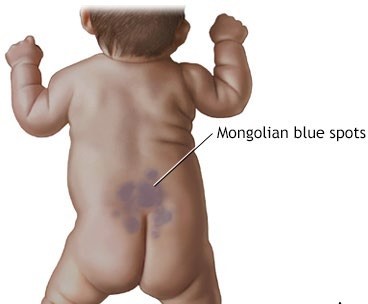A client who is breastfeeding her newborn tells the nurse, "I notice that when I feed him, I feel fairly strong contraction-like pain. Labor is over. Why am I having contractions now?" Which response by the nurse would be most appropriate?
Select one:
"Your body is responding to the events of labor, just like after a tough workout."
"This could be a sign that your body is trying to get rid of retained placental fragments."
"Let me check your vaginal discharge just to make sure everything is fine."
"The baby's sucking releases oxytocin which causes your uterus to contract."
The Correct Answer is D
Choice A Reason: "Your body is responding to the events of labor, just like after a tough workout." This is an inaccurate statement that does not explain the cause of the contractions or reassure the client.
Choice B Reason: "This could be a sign that your body is trying to get rid of retained placental fragments." This is an alarming statement that may scare the client and imply that something is wrong. Retained placental fragments are rare and usually cause heavy bleeding, fever, and infection.
Choice C Reason: "Let me check your vaginal discharge just to make sure everything is fine." This is an unnecessary statement that does not answer the client's question or provide any information.
Choice D Reason: "The baby's sucking releases oxytocin which causes your uterus to contract." This is a correct statement that explains the physiological mechanism of the contractions and reassures the client that they are normal and beneficial.
Nursing Test Bank
Naxlex Comprehensive Predictor Exams
Related Questions
Correct Answer is C
Explanation
Choice A Reason: IgG. This is an incorrect answer that refers to a different type of antibody that is not abundant in breast milk. IgG is a type of antibody that provides systemic immunity against various antigens. IgG is found in low concentrations in breast milk, as it does not cross the mammary epithelium easily. IgG can protect the infant from some infections, but it is mainly transferred from the mother to the fetus through the placenta during pregnancy.
Choice B Reason: IgE. This is an incorrect answer that refers to a different type of antibody that is not relevant to breast milk. IgE is a type of antibody that mediates allergic reactions and parasitic infections. IgE is found in very low concentrations in breast milk, as it does not have a significant role in mucosal immunity. IgE can trigger mast cells and basophils to release histamine and other inflammatory mediators, which can cause symptoms such as itching, swelling, or bronchoconstriction.
Choice C Reason: IgA. This is because IgA is a type of antibody that protects mucosal surfaces from pathogens and toxins. IgA is found in high concentrations in breast milk, especially in colostrum (the first milk produced after delivery). IgA can bind to bacteria and viruses in the infant's gastrointestinal tract and prevent them from ataching to the intestinal wall or crossing into the bloodstream. IgA can also enhance the infant's immune system by stimulating lymphoid tissue development and modulating inflammatory responses.
Choice D Reason: IgM. This is an incorrect answer that refers to a different type of antibody that is not abundant in breast milk. IgM is a type of antibody that activates complement system and agglutinates antigens. IgM is found in low concentrations in breast milk, as it does not cross the mammary epithelium easily due to its large size. IgM can protect the infant from some infections, but it is mainly produced by the infant's own immune system in response to exposure to antigens.
Correct Answer is B
Explanation
Choice A Reason: Milia. This is an incorrect answer that describes a different skin condition. Milia are tiny white or yellow cysts that appear on the nose, chin, or cheeks of newborns. They are caused by the retention of keratin in the sebaceous glands or hair follicles. They usually disappear within a few weeks without treatment.
Choice B Reason: Dermal melanosis. This is a correct answer that explains the finding of bluish markings across the newborn's lower back. Dermal melanosis. This is because dermal melanosis, also known as Mongolian spots, is a common benign skin condition that affects newborns of Asian, African, or Hispanic descent. It is characterized by bluish-gray or brown patches of pigmentation on the lower back, butocks, or extremities. It is caused by the migration of melanocytes from the neural crest to the dermis during embryonic development. It usually fades by 2 to 4 years of age.
Choice C Reason: Stork bites. This is an incorrect answer that refers to another skin condition. Stork bites, also known as salmon patches or nevus simplex, are flat pink or red marks that appear on the forehead, eyelids, nose, upper lip, or nape of the neck of newborns. They are caused by dilated capillaries in the superficial dermis. They usually fade by 18 months of age.
Choice D Reason: Birth trauma. This is an incorrect answer that implies an injury or damage to the newborn's skin or tissues during labor and delivery. Birth trauma can cause bruises, abrasions, lacerations, fractures, or nerve injuries. It is not related to bluish markings on the lower back.

Whether you are a student looking to ace your exams or a practicing nurse seeking to enhance your expertise , our nursing education contents will empower you with the confidence and competence to make a difference in the lives of patients and become a respected leader in the healthcare field.
Visit Naxlex, invest in your future and unlock endless possibilities with our unparalleled nursing education contents today
Report Wrong Answer on the Current Question
Do you disagree with the answer? If yes, what is your expected answer? Explain.
Kindly be descriptive with the issue you are facing.
